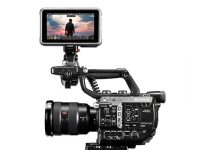Camera technology has evolved to the point where you can capture some impressive professional images using just a smartphone. Among the plethora of photography and videography applications, the iPhone could arguably be considered as the most commonly used smartphone in that regard not only because of the overall convenience in terms of performance and usability it provides but also due to the set of powerful features available on board.
While the iPhone can capture high-quality photos and videos, many enthusiasts wonder if it can shoot something as complex as a hyperlapse video. Well, yes and no. No, because there is no default feature in the camera that allows you to do a hyperlapse video directly. Yes, because there is another option that can produce pretty much the same effect, as explained in the following video by Ryan Shirley.
In a nutshell, hyperlapse is essentially timelapse on steroids. Rather than having a camera stationary as time passes by, the camera is moving in a particular direction. As that’s happening, time is running faster as you can see people and other objects move past the camera at a rapid pace. This could be found in a lot of location montages and its even used by some vloggers who are in the mood to flex their creative filmmaking muscles.
You can achieve the hyperlapse effect very quickly using an iPhone or any other smartphone that provides Timelapse feature. To do this, open the camera app and set the recording mode to Timelapse. Instead of putting the camera on sticks and leaving it to record like in a regular timelapse, start the recording and move towards, away, or around your subject.
The technique is that simple, proving that you don’t need expensive cameras with built-in intervalometers or even remote accessories to achieve the effect. It’s worth noting that if you plan to shoot hyperlapse footage, a great guideline to remember is that while moving, you should try to keep your subject centered. Using a smartphone gimbal or any other technique will allow you to stabilize your footage even further, thus helping you to improve the final results.
Optionally, you could download the Instagram’s Hyperlapse app that essentially allows you stabilize your hyperlapse videos using the smartphone built-in image stabilization capabilities, plus you can choose to tweak the speed of your video incrementally afterward.
Overall, the app gives you more options and tweaks offered than the built-in timelapse feature on your iPhone, plus it’s free to download. Either way, it’s quite easy to capture buttery smooth timelapse videos on your smartphone these days, so don’t hesitate to give this creative technique a try and find out what you can get on your own.
[source: Ryan Shirley]
Disclaimer: As an Amazon Associate partner and participant in B&H and Adorama Affiliate programmes, we earn a small comission from each purchase made through the affiliate links listed above at no additional cost to you.





Before teaching these budding videographers how to shoot hyper lapse videos, why don’t you start with the basics, like holding the camera in Landscape mode, so that it fill’s the screen on their 16:9 TV sets.